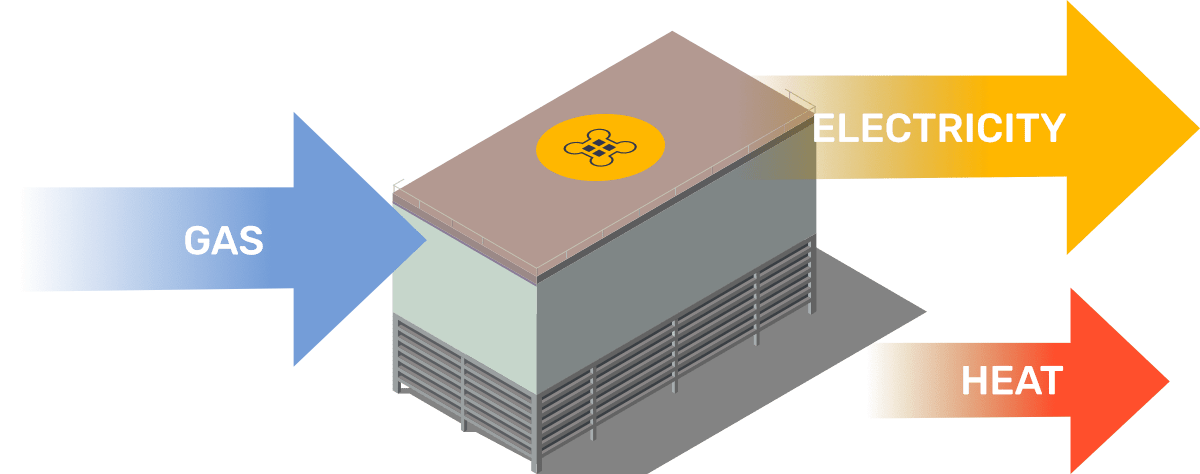COGENERATION WITH NATURAL GAS
Cogeneration plants can be of various types which differ in their operation, but are based on the same principle. A simple natural gas cogeneration plant that you can build in your home is based on the use of fuel cell cogenerators. The methane enters the cogenerator supplying electricity and heat to the output, and all this is obtained by electrochemical way, not by combustion. This, coupled with the high efficiency of the system, makes this solution undoubtedly interesting for those who are also attentive to the environment. The advantage of using natural gas as a fuel for both electricity and heat supply is its widespread availability, abundance and relatively low price compared to other fossil fuels.

A TYPICAL FUEL CELL COGENERATOR
Although the fuel cell is the heart of the system, there are other important components that make up a fuel cell household apparatus. First of all, an extraction (reforming) and purification subsystem is needed to transform the fossil fuel - in this case natural gas or methane - into pure hydrogen with which to power the fuel cell stack. After that, the cells in question convert the hydrogen into direct current (DC). At this point, as in any system based on renewable energy, the current must be transformed with an inverter into alternating (AC) at the grid voltage and frequency, or accumulated in batteries. There is also a system for managing heat and water that uses pumps, fans, heat exchangers to maintain thermal equilibrium and satisfy the energy requirements of the load: for this reason, cogenerators are systems designed to operate continuously, albeit with varying loads.
INSTALL A FUEL CELL IN YOUR HOUSE
Fuel cells, used for domestic cogeneration, can cut your energy bill by up to 50%. After purchasing a fuel cell designed for residential use, within a few years you will return your investment and start saving, earning indirectly. The fuel cell can be installed in the cellar or even outside the house and will act as a cogeneration system, that is, capable of providing electricity and heating the air and water. The efficiency of such a plant can reach 85% thanks to the fact that there is no combustion (therefore no fumes are created) and subsequent electrical generation: the cell works with an electrochemical process transforming the fuel directly into electricity. A common household fuel cell can supply 1 to 5 kW of electricity, depending on the model, and is powered by natural gas. Obviously, the power of the cell must be sized to its actual consumption.
THE PRODUCTION OF HEAT WITH THE FUEL CELLS
Fuel cell systems produce waste heat that can easily be used to heat rooms in a home and to provide hot water, and with their use the typical losses of 7-8% along electrical transmission lines can be avoided. All that is needed to transfer heat from a fuel cell to a home is a "heat exchanger". In fact, most fuel cells use air or water to cool the apparatus and keep the temperature lower for greater efficiency. The waste heat produced by electric motor generators can rarely be used due to carbon monoxide and the low level of heat: fuel cells do not pose this risk and continuously produce a quantity of usable heat. Furthermore, a fuel cell system is quiet, the noise level being typically about 1/4 compared to a gas or diesel generator of the same size.
Request informations
Skills & Services
Innovation for energy and the environment.
In each project we combine the engineering, technical and technological skills of all the member companies.
A Project Manager takes care of all phases of the project: from the initial feasibility study to installation, up to providing a turnkey system, perfectly tested and complete with staff training services and after-sales assistance.
Services
Request information
Contact
ADDRESS
B E E S GROUP ENERGY LLC-FZ
Meydan Grandstand, 6th floor
Meydan Road, Nad Al Sheba
Dubai, UAE
PHONE
+39 334 8520446